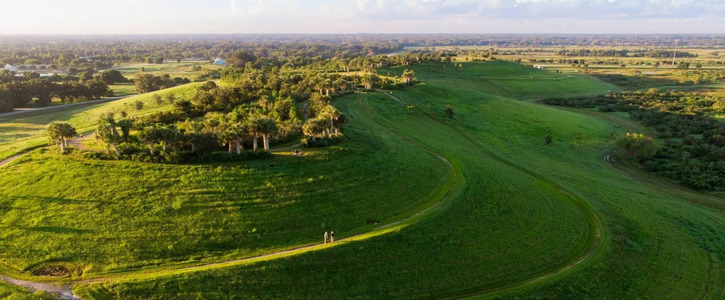5,000 signatures reached
To: Sarasota Board of County Commissioners
Protect Celery Fields!

Developer D.R. Horton, well known for building high-density housing, wants to build 171 units directly across from the Raymond Road boardwalk. This area (and the entire Celery Fields) is a critical habitat for birds and wildlife and provides access to thousands of our county’s annual visitors, our residents, students, and birdwatchers from around the world.
Preserving a low-density, well-buffered zone around the farm area on Raymond Road is a win for all. Crucially, it maintains the unique and fragile ecology of the Celery Fields—for nature, birds, wildlife, and the people who love them—the whole fragile web of life perched against the backdrop of our busy, dynamic urban environment. And it allows the Smiths to sell their land responsibly.
This crowning achievement in civil engineering and in public/private cooperation must not be jeopardized. Just as a dumpsite or commercial development would be totally inappropriate, a housing subdivision would likely destroy or devalue what has been achieved. There is no way to guarantee that the Celery Fields would not be negatively impacted. Once done, it could be destroyed forever.
Preserving a low-density, well-buffered zone around the farm area on Raymond Road is a win for all. Crucially, it maintains the unique and fragile ecology of the Celery Fields—for nature, birds, wildlife, and the people who love them—the whole fragile web of life perched against the backdrop of our busy, dynamic urban environment. And it allows the Smiths to sell their land responsibly.
This crowning achievement in civil engineering and in public/private cooperation must not be jeopardized. Just as a dumpsite or commercial development would be totally inappropriate, a housing subdivision would likely destroy or devalue what has been achieved. There is no way to guarantee that the Celery Fields would not be negatively impacted. Once done, it could be destroyed forever.
Why is this important?
The Celery Fields brings the entire community together. Photographers, nature lovers, walkers, joggers, bikers, families, and education groups–provide an enormous boost to the local economy. Since the pandemic, interest in eco-tourism and birding has surged greatly in popularity.
The Celery Fields is recognized as one of the premier birding areas in Florida with over 249 known species of local and migratory birds including three federally imperiled species—Snail Kite, Wood Stork, and Crested Caracara–and seven Florida imperiled species including Roseate Spoonbill, Least Tern, and Burrowing Owl.
Building here will have adverse effects on bird populations. Birds frequent the Celery Fields to roost, to nest, and many to breed. Studies have shown that traffic, noise, bright night lights and buildings encroaching on wildlife drive them further into the center of an area, crowding them and setting up competition for resources, invariably leading to a decline in wildlife populations. Road blockages, traffic, and roadkill will also skyrocket.
Studies have shown that increased noise levels harm birds’ productivity rates. They are unable to call during alarm situations and to communicate with each other, which affects the way they connect and protect themselves. They also cannot hear their mates’ breeding songs; populations can plummet as a result.
The Celery Fields are integral to flood protection in surrounding areas and improve water quality downstream. The pressure from a dense housing development would make it even harder for the Celery Fields to work on maintaining water quality due to increased run-off and nitrogen from new gardens and lawns, not to mention the polluting effects of such runoff on wetlands, flora, and fauna, and indeed all wildlife.
The Celery Fields represents Sarasota County’s remarkable achievement in highlighting and preserving the importance of ecosystems, wetlands, native and migrating creatures, and human relationships to all of these treasures.
The Celery Fields is recognized as one of the premier birding areas in Florida with over 249 known species of local and migratory birds including three federally imperiled species—Snail Kite, Wood Stork, and Crested Caracara–and seven Florida imperiled species including Roseate Spoonbill, Least Tern, and Burrowing Owl.
Building here will have adverse effects on bird populations. Birds frequent the Celery Fields to roost, to nest, and many to breed. Studies have shown that traffic, noise, bright night lights and buildings encroaching on wildlife drive them further into the center of an area, crowding them and setting up competition for resources, invariably leading to a decline in wildlife populations. Road blockages, traffic, and roadkill will also skyrocket.
Studies have shown that increased noise levels harm birds’ productivity rates. They are unable to call during alarm situations and to communicate with each other, which affects the way they connect and protect themselves. They also cannot hear their mates’ breeding songs; populations can plummet as a result.
The Celery Fields are integral to flood protection in surrounding areas and improve water quality downstream. The pressure from a dense housing development would make it even harder for the Celery Fields to work on maintaining water quality due to increased run-off and nitrogen from new gardens and lawns, not to mention the polluting effects of such runoff on wetlands, flora, and fauna, and indeed all wildlife.
The Celery Fields represents Sarasota County’s remarkable achievement in highlighting and preserving the importance of ecosystems, wetlands, native and migrating creatures, and human relationships to all of these treasures.
